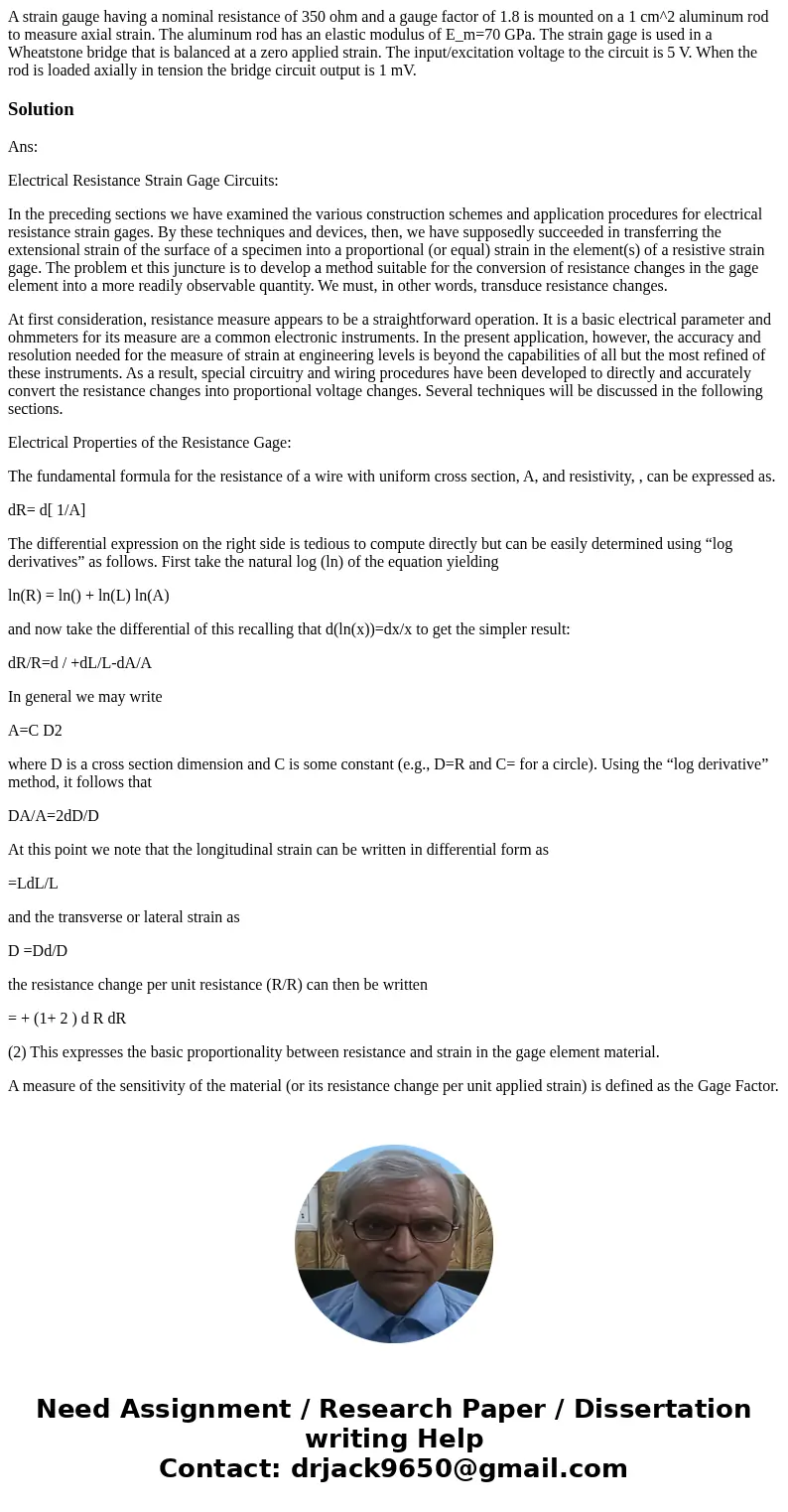A strain gauge having a nominal resistance of 350 ohm and a
Solution
Ans:
Electrical Resistance Strain Gage Circuits:
In the preceding sections we have examined the various construction schemes and application procedures for electrical resistance strain gages. By these techniques and devices, then, we have supposedly succeeded in transferring the extensional strain of the surface of a specimen into a proportional (or equal) strain in the element(s) of a resistive strain gage. The problem et this juncture is to develop a method suitable for the conversion of resistance changes in the gage element into a more readily observable quantity. We must, in other words, transduce resistance changes.
At first consideration, resistance measure appears to be a straightforward operation. It is a basic electrical parameter and ohmmeters for its measure are a common electronic instruments. In the present application, however, the accuracy and resolution needed for the measure of strain at engineering levels is beyond the capabilities of all but the most refined of these instruments. As a result, special circuitry and wiring procedures have been developed to directly and accurately convert the resistance changes into proportional voltage changes. Several techniques will be discussed in the following sections.
Electrical Properties of the Resistance Gage:
The fundamental formula for the resistance of a wire with uniform cross section, A, and resistivity, , can be expressed as.
dR= d[ 1/A]
The differential expression on the right side is tedious to compute directly but can be easily determined using “log derivatives” as follows. First take the natural log (ln) of the equation yielding
ln(R) = ln() + ln(L) ln(A)
and now take the differential of this recalling that d(ln(x))=dx/x to get the simpler result:
dR/R=d / +dL/L-dA/A
In general we may write
A=C D2
where D is a cross section dimension and C is some constant (e.g., D=R and C= for a circle). Using the “log derivative” method, it follows that
DA/A=2dD/D
At this point we note that the longitudinal strain can be written in differential form as
=LdL/L
and the transverse or lateral strain as
D =Dd/D
the resistance change per unit resistance (R/R) can then be written
= + (1+ 2 ) d R dR
(2) This expresses the basic proportionality between resistance and strain in the gage element material.
A measure of the sensitivity of the material (or its resistance change per unit applied strain) is defined as the Gage Factor.

 Homework Sourse
Homework Sourse